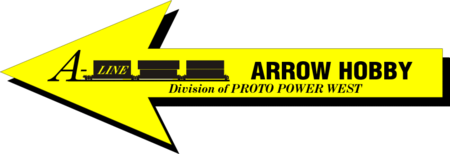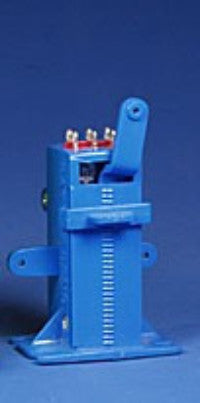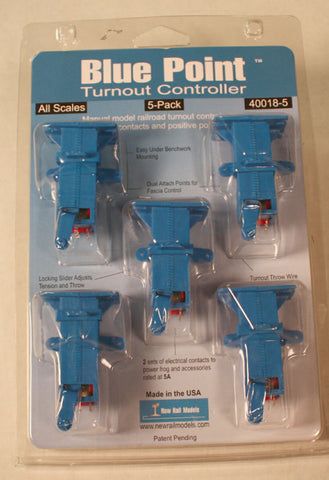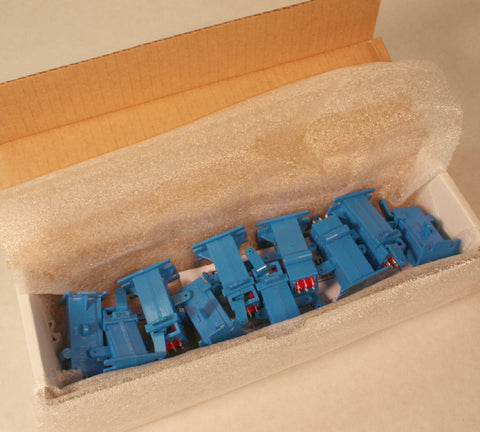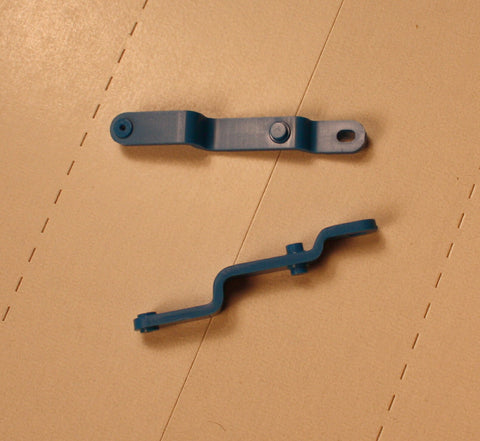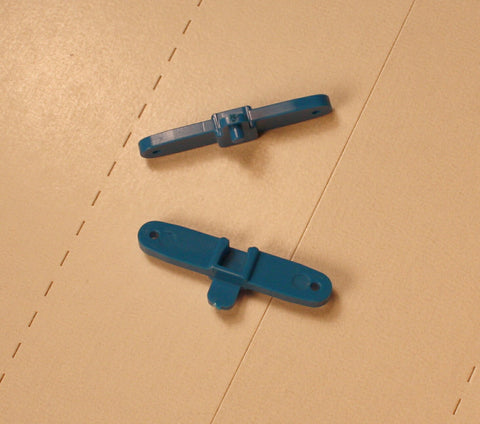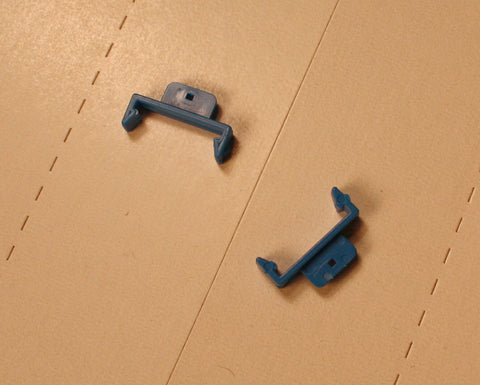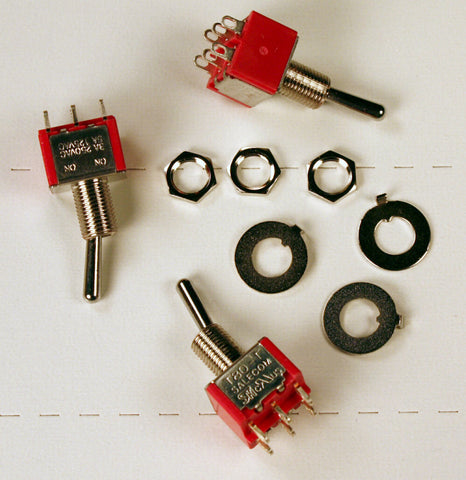Blue Point Manual Turnout Controller
 If you want to make the operation of your layout a lot more enjoyable, slow things down and have more hands-on control, the Blue Point™ is what you need!
If you want to make the operation of your layout a lot more enjoyable, slow things down and have more hands-on control, the Blue Point™ is what you need!
Ideal for yards, sidings and anywhere else you don't need a motor- driven turnout controller. These are small and very easy to install. Attach them to the benchwork under the turnout, then use our FLEX LINK™ system to connect the Blue Point™ to the fascia knob. The Blue Point™ includes two sets of electrical contacts-rated at 5 amps.
We've also had a number of questions about using the Blue Points™ under 2" thick foam. The simple answer is yes, they work great. The tension and throw adjustment slider provides more than enough range to handle long runs of spring wire. We include .032" diameter spring steel wire with the product, which is quite rigid.
Installation
Installation is very simple. Use our Flex Link™ system for hooking up Blue Points™ to your fascia. These kits include everything you need.
Specs
The dimensions for the machines are 2 1/2" tall , base footprint is 1 1/2" square.
We've designed the Blue Point™ Turnout Control to operate turnouts in scales from N through O. The electrical contacts are double pole, double throw (DPDT) rated at 5 amps, so they have plenty of capacity to power a frog or just about anything else you'll want to drive.
DPDT Switch Diagram
The picture on the right has two diagrams. The left diagram shows the numbering of the contacts (viewed from below), while the right diagram shows how these contacts are arranged electrically. When the switch is in one position, contact 5 is connected to contact 4, and contact 2 is connected to contact 1. Move the switch to the other position and now 5 is connected to 6 and 2 is connected to 3.

Typical DCC-Friendly Turnout Wiring
And finally, here is a typical wiring diagram for a powered frog found on DCC-friendly turnouts:

Note: This is a view from above, which is why the numbers are in a different order from the diagrams above (they are views of the bottom).
There are a number of different designs for turnouts, with the wiring being a little different for some of the turnouts. You can find a lot more information about the different turnouts at this link: Wiring Turnouts.
Made in the USA

- Blue Point Manual Turnout Controller
- Blue Point Flex Link Starter Kit & Parts
- Blue Point Installation Instructions - Part 1 (Turnout not attached to layout yet)
- Blue Point Installation Instructions - Part 2 (Turnout installed on layout)
- Blue Point Installation Instructions - Part 3 (Turnout operated from both sides of layout)
- Universal Throttle Pockets
- Folding Drink Cup & Tool Holders
